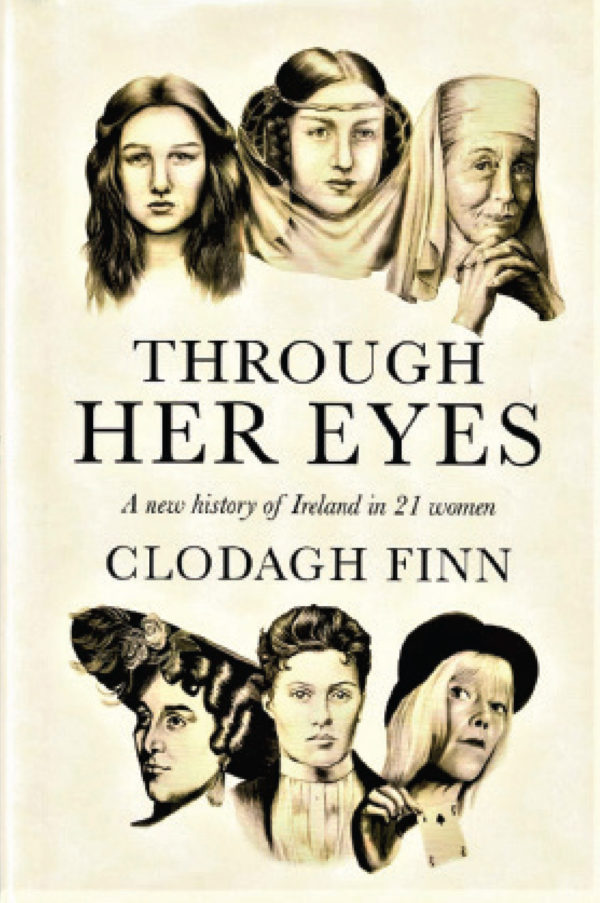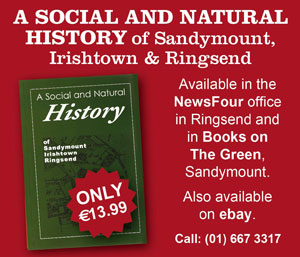
Geneva Pattison
Author and journalist, Clodagh Finn, invites us to travel through time and pay tribute to 21 ground-breaking Irish women in her book ‘Through Her Eyes: A new history of Ireland through 21 women’. When learning about Ireland’s History we’re often presented with a large proportion of male-centric tales, the legends of ancient kings, revolutionary war heroes and academics that challenged us to think differently. However, Clodagh’s work documents the bravery, innovation and unrelenting drive of Ireland’s sometimes overlooked historically influential women.
The book is chronological and reaches as far back as 3600 BC, to a woman named only as ‘The Woman of the Burren’. She would have been among the first farmers to settle in Ireland some 6000 years ago, travelling all the way from Turkey. She lived an exceedingly harsh life as one might expect, but managed to live to an estimated age of 55 years old.
This was several decades longer than the average life expectancy for a woman during the Neolithic period. It’s something worth celebrating when you consider that 55 years back then, is the equivalent of reaching 100 years old now. Something definitely deserving of a letter of congratulations from the President, wouldn’t you say?
Another intriguing entry comes in the form of St Dahalin’s story. She was an early Irish saint and miracle worker who existed around 500 AD. St Dahalin lived in a convent with a group of nuns in Kerry and upon hearing news of raiders approaching went out to meet them head on.
Records say she struck them blind where they stood, leaving them helpless. This defiant act saved her fellow nuns’ lives. The raiders begged for their vision to be restored and Dahalin took pity, leading them to a well to wash their eyes and cure them. She was no fool though, first she made them promise to give up their criminal ways before helping them. A wise move indeed.
There was another account of a female saint from Dahalin’s time called St Canir. Accounts tell that she walked on water, after receiving a vision that told her she should die and be buried on Scattery Island. Unfortunately, the Island had a monastic settlement on it and women were forbidden to travel there. Upon arrival at Scattery Island, St Canir challenged one monk, St Senán, and the argument was noted down in The Book of Lismore.
St Canir said: “Christ came to redeem women no less than to redeem men. He did not suffer less for the sake of women than for the sake of men. Women have given humble service and ministration to Christ and to his apostles. Women then, no less than men, enter into the Kingdom of Heaven. Why, then, would you not take women to you onto your island?”
St Senán didn’t have any profound rebuttals to her logic and they eventually gave in and allowed her to die and be buried on the island. The author points out that in our long history of a male-dominated church, you don’t often see accounts documenting the voices of lesser-known female saints, never mind one so adept at debating women’s rights regarding church matters in the 6th century. It’s a truly captivating tale and one that could have taken place today (and thankfully, does take place today).
You’ve most likely heard of Robert Boyle, the Irish chemist largely regarded as one of the founding fathers of modern chemistry. However, you may have heard less about his gifted older sister Katherine Jones, also known as Lady Ranelagh.
She came of age during a time when reading and writing was still seen as untoward skills for a lady to hold. Yet, she went against her father’s wishes and educated herself. This led to her becoming one of the most powerful women in the scientific and philosophical circles of high society during the 17th century.
There was a very exclusive gathering of intellectuals called the ‘Hartlib Circle’ made up of 766 members. Finn highlights in this particular section that Lady Ranelagh, out of the 766 members in total, was the seventh most important person out of the entire collective. That final deduction was derived from mathematical analysis of the surviving letters between the Hartlib circle members.
Lady Ranelagh was operating at the very centre of innovation at the time. Politicians, and even royalty sought her council with regards to political and educational reform. She also established a reputation as a consulting physician and eventually had a laboratory built in the garden of her London home, where she concocted many of her remedies.
Her brother Robert eventually came to live with her and they collaborated for over two decades on scientific studies. There’s a lot more to Lady Ranelagh’s story, especially the difficulties in her early life, something Clodagh Finn connects to Lady Ranelagh’s future passions in excellent detail.
‘Through Her Eyes’ also tells the story of an Irish woman who disguised herself as a man and fought in the American Civil War. Jennie Hodgers, originally from Clogherhead, Laois, served her full three-year term in the American army. She posed as a man named Albert Cashier and stated her occupation was farming.
Despite the close quarters, the secret was never exposed during the entire tour of duty. As the Americans were so desperate for recruits at the time, the medical exams wouldn’t have been extremely thorough and a woman would have passed unseen.
The author imparts a wonderful story of Albert’s time as a soldier, regarding when they were captured by the enemy side. Albert was discovered while out on reconnaissance one night and taken hostage. He managed to seize one of the guard’s guns, knocked him down and ran back to camp. Not bad for someone who was five feet three inches tall.
This story is also vitally important as an integral part of trans history. Although it cannot be known for certain what gender Albert ultimately identified with, History is often rife with trans erasure. Now is the time for finally acknowledging and celebrating the great achievements, struggles and sheer bravery of the trans community throughout the ages.
There are so many fascinating vignettes and inspiring accounts of women’s lives in this book. From the Celtic queens of antiquity and 19th century alpine mountaineers to pioneering bio-technologists of the 21st century, we get a refreshing glimpse into Ireland’s hidden ‘herstory’.
Any lovers of history will thoroughly enjoy this book, from every perspective. Clodagh Finn’s exciting book truly allows us to lift the screen on the conventional, walk in someone else’s shoes and experience Ireland’s broader past through her eyes.
‘Through Her Eyes: A New History of Ireland Through 21 Women’ is published by Gill books and available from Books on the Green and all good bookstores.



